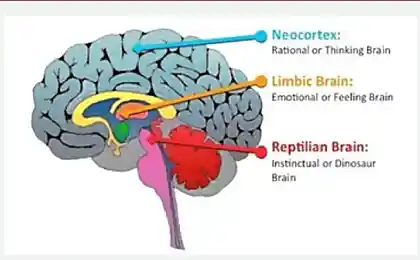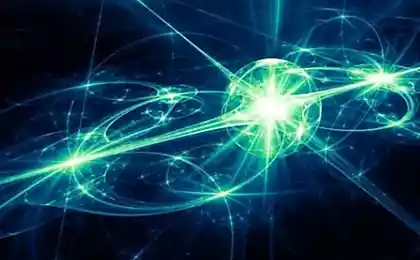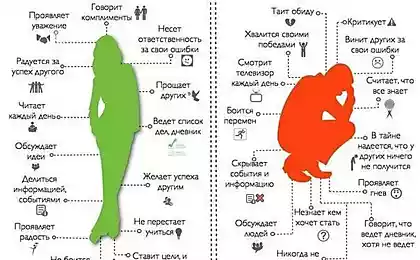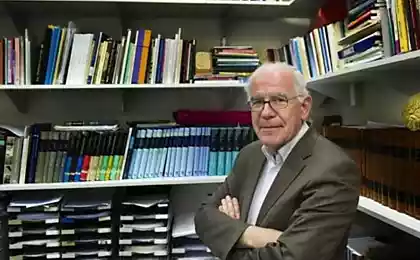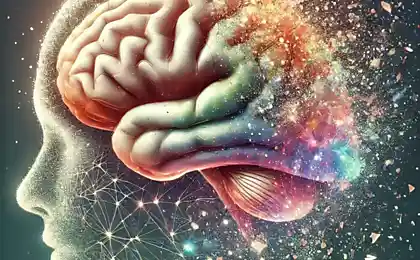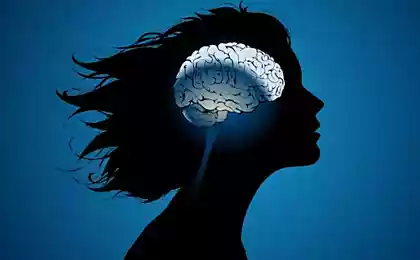633
Non-invasive methods for the first time 25-year-old boy brought out of coma
A group of scientists from the University of California at Los Angeles published a report on the first in the history of medicine the case of the removal of the patient from coma non-invasive methods. The patient was able to bring into the consciousness, influencing pulses of ultrasound at a small area of the brain called the thalamus. On the third day after exposure, the patient began to understand it and fully came out of the coma, and on the fifth day we tried to walk.
While this is an isolated case. The return of consciousness the patient may be a coincidence or accident. May be due to his young age. Scientists are now preparing a larger clinical trial of the device.

The protagonist of the film "memento" also suffered from damage to the thalamus
If the theory receives confirmation, the experimental ultrasonic generator can be approved for use by all medical institutions. He can bring out of a vegetative state coma and waking tens of thousands of people. At the same time, scientists a little closer to understanding the phenomenon of consciousness — the fundamental way in which man relates with the world.
The results of the experiment can be accidental. But scientists have long been studying this region of the brain, and earlier work has provided evidence that the thalamus is related to consciousness.
In 2007 he produced the first such operation with exposure to the thalamus. 38-year-old patient, who for six years was in a waking coma (minimally conscious state), managed to regain partial functionality of the interacting electrodes on the thalamus. The lead researcher, who conducted the operation, said ultrasonic treatment promising: "This is an intriguing and exciting opportunity," said Dr. Nicholas Schiff (Schiff Nicholas), a neuroscientist from the biomedical research centre Weill Cornell Medicine at Cornell University (USA).
The thalamus — the area of the brain responsible for the redistribution of information from the senses, except smell, to the cerebral cortex. After the information about any feeling entered the nucleus of the thalamus, where it is primary treatment. In the thalamus there are four main nuclei: the group of neurons that adjusts the allocation of visual information; - redistributing auditory information; -, redistributive and tactile information-redistributing sense of equilibrium and balance. Located in the Central part of the brain.

The limbic system
Damage to the thalamus can lead to sleep disorders, involuntary trembling of the hands in a conscious state, as well as anterograde amnesia, when the patient remembers all the events prior to the injury, but nothing can ever remember. From damage to the thalamus has suffered the protagonist of the famous film "Remember" (Memento), Christopher Nolan is one of the best movies in cinema history.
It is clear that the thalamus is associated with the formation of memories. But does the presence of memory and memories with the presence of consciousness? It is possible, connected directly.
In the first story, operation for non-invasive removal of the person from the coma, scientists from the University of California used an experimental device similar to a saucer with a diameter of 71.5 mm, in plastic case, filled with deionized degassed water and sealed with a thin plastic membrane transparent to ultrasound. A transmitter focuses the ultrasonic radiation at a frequency of 650 kHz exactly in the Central area of the brain where the thalamus. Specifically, the emitter was used BXPulsar 1001 production company Brainsonix Inc.
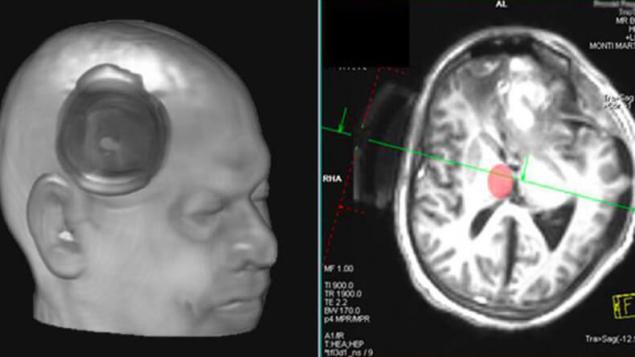
Experimental device for ultrasonic stimulation of the thalamus. Image: Martin M. Monti / University of California, Los Angeles
As it turned out, the method of focused ultrasound pulsation a low intensity (low intensity focused ultrasound pulsation (LIFUP)), capable of non-invasive impact on the region deep inside the brain without affecting neighboring departments.
This technique has been tested previously on humans and animals — and did from the point of view of security. Previously, the effects of LIFUP in the thalamus of laboratory mice has helped to speed up return of brain function after damage. Those results became the basis for the first experiment on a human being.
For the first ever clinical trial LIFUP on the person (NCT02522429 our database of clinical trials) was selected 25-year-old patient being in a coma for 14 days after receiving a traumatic brain injury in a traffic accident.
Conducted computer tomography revealed he bifrontal injuries of the brain and a subdural hematoma (bleeding between the solid and the arachnoid meninges). During the experiment, the patient continued to enter the same sedatives as before.
During the procedure, LIFUP pulses was applied with a repetition of 100 Hz (100 times per second), the duration of each pulse 0.5 msec. There were performed 10 ultrasound effects derated spatial-temporal intensity of 720 mW/cm2, each lasting 30 s, with intervals between them for 30 s. the Procedure was controlled by the powerful 3 Tesla MRI scanner (Magnetom Tim Trio, Siemens) installed in the medical research center, University of California at Los Angeles.
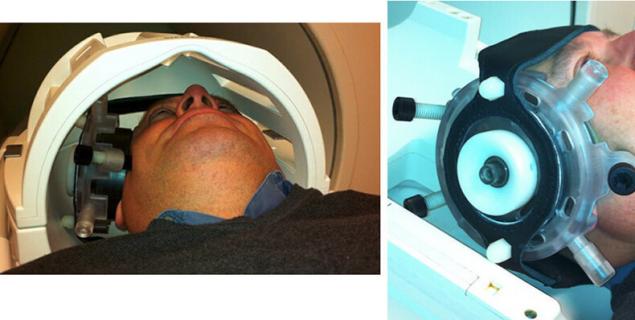
Ultrasonic neuromodulation device BXPulsar production company Brainsonix Inc. Photo: Brainsonix Inc.
Before the procedure the patient within 14 days showed steady state of waking coma. Three days after the procedure, the patient demonstrated a complete understanding of speech, sustainable response to commands and sustainable communication Yes/no by nodding of the head. The doctors diagnosed him with an exit from the state of waking coma. On the fifth day after LIFUP the patient tried to walk.
A successful experiment for the removal of patients from coma will be a welcome saving for many people. The inventors say that this technology will help relieve the enormous emotional and financial burden from relatives of patients, reduce the burden on medical infrastructure and national budget. Now patients years support in a coma, which is very expensive and also raises a number of difficult legal and ethical questions.
The study has great practical value and gives food for thought about the nature of consciousness. These discussions have escalated in recent years, after the scientific literature has been described a clinical case of a very interesting patient. For many years he lived a normal and healthy life, without even knowing the absence of it 90% of the brain. The man measured the intelligence that was below the average: an IQ of 75, but this did not prevent him from working civil servants to marry and have two children.
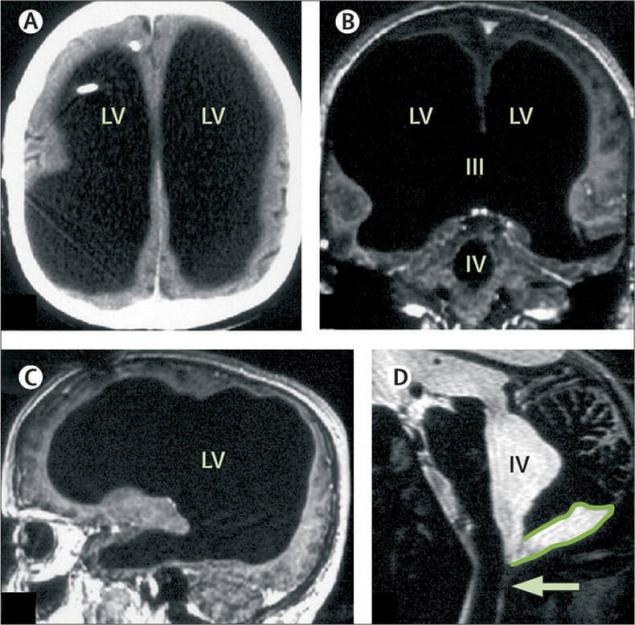
MRI of a patient with a virtually absent brain, but leading a normal social life.Photo: Feuillet et al./The Lancet
Prior to this case, scientists have suggested that consciousness can be associated with various specific brain regions such as the claustrum (fence) — thin (thickness about 2 mm) irregular plate consisting of gray matter and located under the bark of the big hemispheres of the brain in deep white matter. Another group of researchers from Princeton University have advanced the theory that consciousness is connected with the visual cortex. But the history of the French patient is put under a big question both of these theories.
The Mayans knew about the irregularity synodic period of Venus
12 very useful gadgets for travel
There was even a new theory, such as "regulations on the radical plasticity" of the brain. This theory postulates the existence of consciousness means that the person is not simply possesses information but also aware of the fact that he has information. The brain continuously and unconsciously learns to re-describe its own activity to itself, and these reports are "self-test" form the basis of conscious experience. It turns out that the presence of consciousness is critically important to have memory.
Now there is new evidence that the nature of consciousness associated with the functioning of the thalamus and the nature of memory. In the end, as said the protagonist of the film Memento, we all need memories to remind us of who we are.published
Source: geektimes.ru/post/279850/
While this is an isolated case. The return of consciousness the patient may be a coincidence or accident. May be due to his young age. Scientists are now preparing a larger clinical trial of the device.

The protagonist of the film "memento" also suffered from damage to the thalamus
If the theory receives confirmation, the experimental ultrasonic generator can be approved for use by all medical institutions. He can bring out of a vegetative state coma and waking tens of thousands of people. At the same time, scientists a little closer to understanding the phenomenon of consciousness — the fundamental way in which man relates with the world.
The results of the experiment can be accidental. But scientists have long been studying this region of the brain, and earlier work has provided evidence that the thalamus is related to consciousness.
In 2007 he produced the first such operation with exposure to the thalamus. 38-year-old patient, who for six years was in a waking coma (minimally conscious state), managed to regain partial functionality of the interacting electrodes on the thalamus. The lead researcher, who conducted the operation, said ultrasonic treatment promising: "This is an intriguing and exciting opportunity," said Dr. Nicholas Schiff (Schiff Nicholas), a neuroscientist from the biomedical research centre Weill Cornell Medicine at Cornell University (USA).
The thalamus — the area of the brain responsible for the redistribution of information from the senses, except smell, to the cerebral cortex. After the information about any feeling entered the nucleus of the thalamus, where it is primary treatment. In the thalamus there are four main nuclei: the group of neurons that adjusts the allocation of visual information; - redistributing auditory information; -, redistributive and tactile information-redistributing sense of equilibrium and balance. Located in the Central part of the brain.

The limbic system
Damage to the thalamus can lead to sleep disorders, involuntary trembling of the hands in a conscious state, as well as anterograde amnesia, when the patient remembers all the events prior to the injury, but nothing can ever remember. From damage to the thalamus has suffered the protagonist of the famous film "Remember" (Memento), Christopher Nolan is one of the best movies in cinema history.
It is clear that the thalamus is associated with the formation of memories. But does the presence of memory and memories with the presence of consciousness? It is possible, connected directly.
In the first story, operation for non-invasive removal of the person from the coma, scientists from the University of California used an experimental device similar to a saucer with a diameter of 71.5 mm, in plastic case, filled with deionized degassed water and sealed with a thin plastic membrane transparent to ultrasound. A transmitter focuses the ultrasonic radiation at a frequency of 650 kHz exactly in the Central area of the brain where the thalamus. Specifically, the emitter was used BXPulsar 1001 production company Brainsonix Inc.

Experimental device for ultrasonic stimulation of the thalamus. Image: Martin M. Monti / University of California, Los Angeles
As it turned out, the method of focused ultrasound pulsation a low intensity (low intensity focused ultrasound pulsation (LIFUP)), capable of non-invasive impact on the region deep inside the brain without affecting neighboring departments.
This technique has been tested previously on humans and animals — and did from the point of view of security. Previously, the effects of LIFUP in the thalamus of laboratory mice has helped to speed up return of brain function after damage. Those results became the basis for the first experiment on a human being.
For the first ever clinical trial LIFUP on the person (NCT02522429 our database of clinical trials) was selected 25-year-old patient being in a coma for 14 days after receiving a traumatic brain injury in a traffic accident.
Conducted computer tomography revealed he bifrontal injuries of the brain and a subdural hematoma (bleeding between the solid and the arachnoid meninges). During the experiment, the patient continued to enter the same sedatives as before.
During the procedure, LIFUP pulses was applied with a repetition of 100 Hz (100 times per second), the duration of each pulse 0.5 msec. There were performed 10 ultrasound effects derated spatial-temporal intensity of 720 mW/cm2, each lasting 30 s, with intervals between them for 30 s. the Procedure was controlled by the powerful 3 Tesla MRI scanner (Magnetom Tim Trio, Siemens) installed in the medical research center, University of California at Los Angeles.

Ultrasonic neuromodulation device BXPulsar production company Brainsonix Inc. Photo: Brainsonix Inc.
Before the procedure the patient within 14 days showed steady state of waking coma. Three days after the procedure, the patient demonstrated a complete understanding of speech, sustainable response to commands and sustainable communication Yes/no by nodding of the head. The doctors diagnosed him with an exit from the state of waking coma. On the fifth day after LIFUP the patient tried to walk.
A successful experiment for the removal of patients from coma will be a welcome saving for many people. The inventors say that this technology will help relieve the enormous emotional and financial burden from relatives of patients, reduce the burden on medical infrastructure and national budget. Now patients years support in a coma, which is very expensive and also raises a number of difficult legal and ethical questions.
The study has great practical value and gives food for thought about the nature of consciousness. These discussions have escalated in recent years, after the scientific literature has been described a clinical case of a very interesting patient. For many years he lived a normal and healthy life, without even knowing the absence of it 90% of the brain. The man measured the intelligence that was below the average: an IQ of 75, but this did not prevent him from working civil servants to marry and have two children.

MRI of a patient with a virtually absent brain, but leading a normal social life.Photo: Feuillet et al./The Lancet
Prior to this case, scientists have suggested that consciousness can be associated with various specific brain regions such as the claustrum (fence) — thin (thickness about 2 mm) irregular plate consisting of gray matter and located under the bark of the big hemispheres of the brain in deep white matter. Another group of researchers from Princeton University have advanced the theory that consciousness is connected with the visual cortex. But the history of the French patient is put under a big question both of these theories.
The Mayans knew about the irregularity synodic period of Venus
12 very useful gadgets for travel
There was even a new theory, such as "regulations on the radical plasticity" of the brain. This theory postulates the existence of consciousness means that the person is not simply possesses information but also aware of the fact that he has information. The brain continuously and unconsciously learns to re-describe its own activity to itself, and these reports are "self-test" form the basis of conscious experience. It turns out that the presence of consciousness is critically important to have memory.
Now there is new evidence that the nature of consciousness associated with the functioning of the thalamus and the nature of memory. In the end, as said the protagonist of the film Memento, we all need memories to remind us of who we are.published
Source: geektimes.ru/post/279850/

